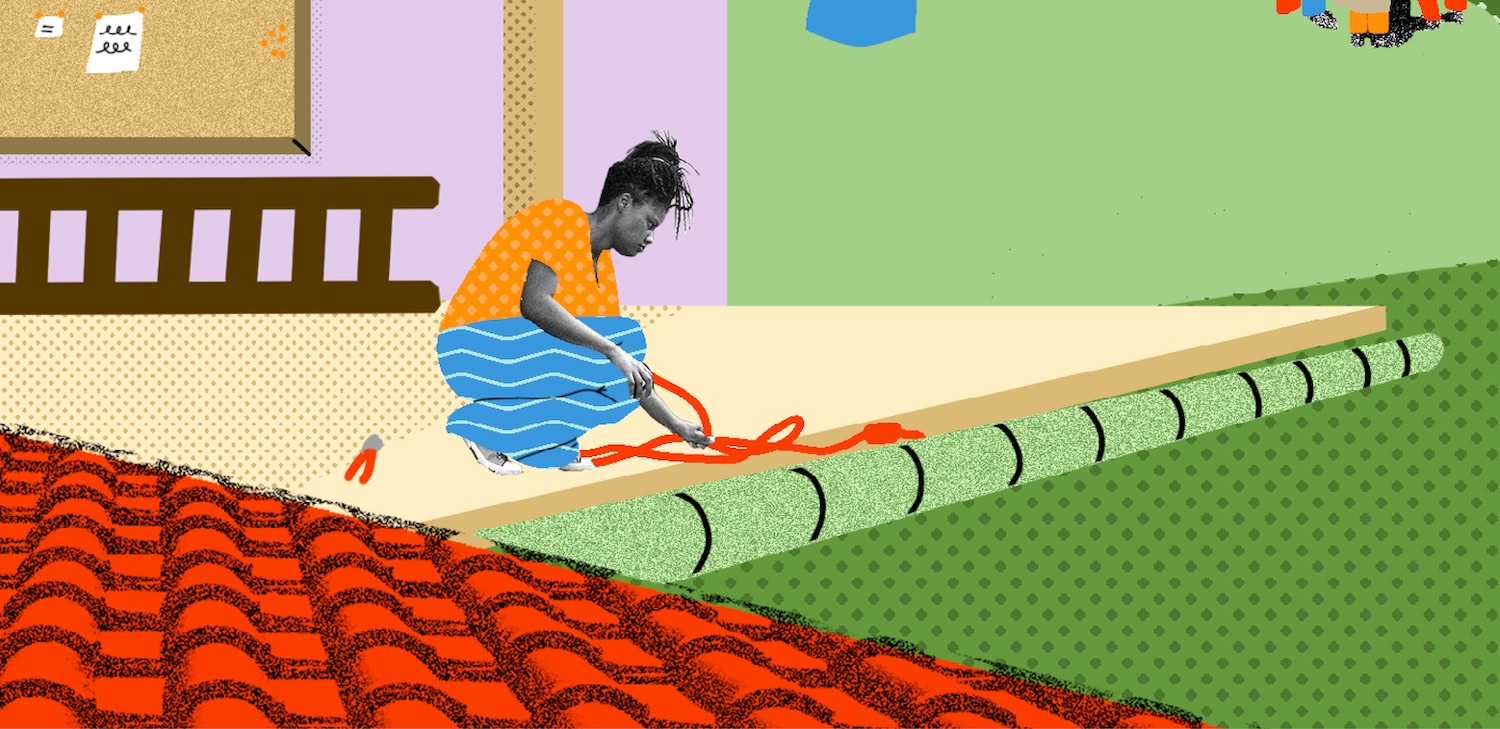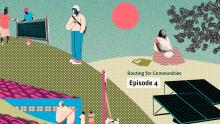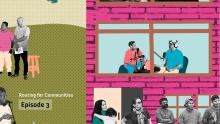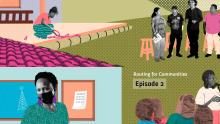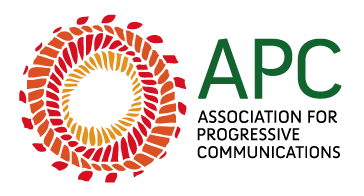#7 Thinking about gender and race from two community-led experiences in Brazil
Welcome to Brazil! In the seventh episode of our season, we share a story from São Paulo, the largest city by population in the country as well as South America. We talked to Daiane Araújo and learned more about her experience at Casa dos Meninos, an initiative working on information and communication technologies with the youth on the city’s outskirts. She works on community networks projects and reflects on their intersection with gender, race and class.
We also travelled to a small Brazilian town called Monteiro Lobato where Luísa Bagope lives. She is one of the creators of the project, Nodes that Bond, which focuses on gender and feminist issues.
“Routing for Communities” is a 12-episode podcast. Here you will be able to listen to the life stories of people connecting themselves while defending the rights and well-being of their communities.
Stories and voices that are intertwined, connected by one thread: building internet and communication community networks.
Hello! My name is Renata Porto and I am the host of this 12-episode season around community-led initiatives on internet and communication.
This is the seventh episode of our series and today we’re going to know more about a story from my hometown: São Paulo, the largest city by population in Brazil and South America.
“The position of producing a community network as a Black woman is very lonely. The moment you arrive somewhere, you’ll be singled out as the only Black body there.”
This is Daiane Araújo, who has been part of Casa dos Meninos or Boys’ House for over 10 years. She works on projects focusing on information and communication technologies, youth, and the local territory: everything on the outskirts of the city.
In this episode, we also talked to Luísa Bagope. She works on the project, Nodes that Bond, or Nós por Nós in Portuguese, concerning gender and feminist issues in Brazil’s countryside.
“We’re highlighting the idea that women do create and operate technologies and that we’ve been excluded from the digital technology universe due to a misogynist power dispute.”
So, welcome to Brazil!
Routing for Communities: An audio journey tracing community connectivity around the world.
For those who don't know Brazil well, we can be known as the country of soccer, naturally scenic places and abundant culture. But much more than that, this is also one of the countries experiencing major social and economic inequalities in the world; and it is the home of social movement resistance.
With a total of 203 million inhabitants, the country has found itself back on the hunger map now. According to the UN, 21 million people faced serious food insecurity in 2022. Racism and sexism are a profound problem here. And all of such disparity is obviously reflected on the field of connectivity and digital technologies as well.
Some 47 million Brazilians do not have access to the internet. That is what a study conducted by Brazil’s Internet Management Council has shown. The survey was done in over 20,000 homes before the beginning of the COVID-19 pandemic and reveals the inequality of internet access among the population. About 20 million homes in the country still do not have connection to the worldwide web. The cellphone is the most used device for internet access in the country’s rural areas as well as amongst the D and E social classes.
This data presented in the 2020 report you just heard was updated in 2022 by the Brazilian Internet Steering Committee: 36 million Brazilians do not have access to the internet and 15 million homes in the country still do not have connection to the worldwide web. In fact, 92 million Brazilians access the internet only through cellphones. The data also reveals deep inequalities between urban and rural areas, between different regions of the country, and between social classes.
In this episode, we will travel to Brazil’s southeast. Here, in the city of São Paulo, the country’s financial centre, social contrasts are immediately visible.
“Hello, Daiane, how’s it going?
Hey there. Hang on, let me put on my earphones because I think it’ll be better.
Can you hear me well?
Hey.
Hey, how are you?
Now I can.”
Daiane speaks from Jardim São Luiz, São Paulo’s southside. She lives there and is also part of Casa dos Meninos, a social non-profit organisation. Located also in Jardim São Luiz, this organisation focuses on the use of new technologies and the study of the territory by the local youth. They also built a community network back in 2010.
“I’m Daiane Araújo dos Santos. I’m 33. Daughter of Manuel and Maria, migrants from Brazil’s northeast, from the state of Bahia. I was born in São Paulo, in the city of São Paulo, but moved to Embu das Artes, a municipality in the metropolitan area, as a little girl. I’m the second of three children and my siblings are all men. And I kind of started to question, somehow, the way my parents treated my brothers with a bit more freedom in relation to me, as a woman.
After graduating high school, these questions led Daiane to sign up for a course at Casa dos Meninos. Such training involved young workers in the study and development of maps through geo-referencing software. After it, she was invited to be part of Casa dos Meninos.
The district of Jardim São Luiz is considered part of the outskirts in São Paulo. So, it is marked by a higher number of impoverished black populations, right? The number of young people is gigantic. We’re right between São Luís cemetery and Campo Limpo’s hospital. In the 1990s, Jardim São Luiz’s cemetery was the cemetery that buried the highest number of young people in Latin America, so it was a process of exterminating the youth, especially the Black youth, Black young men.”
Casa dos Meninos was named so because it started off as an orphanage in the 1960s, but it later became defunct.
In the 1980s, the building was given to the Jardim São Luís community, which turned it into an association to take care of children and teenagers through social assistance. In 1999, and throughout the 2000s, a partnership with the activist Cleodon Silva was established. He is an important figure at Casa dos Meninos.
Cleodon was a left-wing activist who resisted the Brazilian civil-military dictatorship during the 1960s until the 1980s. He was a pioneer in Brazil when it came to providing access to technology to the children of working-class peoples. Even after Cleodon’s death in 2011, his legacy remains very much alive in the project.
“In 2010, we started to work with a community network. And a community network aiming at creating a common ground for people, a common database of information and communication, as well as sharing the range of cultural wealth that we have in our territory. We set up antennas in the community to distribute internet from Casa dos Meninos, you know? And one of the people who actually helped us was a person from the community, who worked with a community-led carrier.”
This community network was born aiming to create a common space for residents to share learning resources, while reclaiming digital technologies from a new perspective based on collaboration, solidarity and local exchange practices. It has experienced the usual ups and downs throughout the years.
One of its ups was in 2014, when the association took part in an open call by the City Hall of São Paulo. They managed to get funds to buy a server and an antenna, as well as interact with digital culture collectives for the setting up of a Wi-Fi network developed by and for the community. However, soon after that, given the lack of resources and technical skills, the network ended up being deactivated.
Nowadays, Casa dos Meninos is organised in different work groups led by local women. One of them is dedicated to learning more about infrastructure related to community networks, such as servers.
“Host: Welcome back to Black News Tonight. Our next guest is Djamila Ribeiro from Brazil, the country with the biggest Black population outside the continent of Africa. Known for its carnival and soccer, there is also another important component of Brazilian society that many don’t know: the deep systemic racism.
Djamila: Racism is not only about an individual issue. Racism is a systemic issue. That racism is when you are in a country where the Black population is the largest population and you turn on the television and you don’t see Black people. Racism is when you live in a country [where] every 23 minutes a young Black man is killed as a victim of police violence.”
This is an interview with Djamila Ribeiro, philosopher and activist of Black feminism in Brazil. The interview was conducted by the journalist Marc Lamont Hill from the United States.
This excerpt makes it crystal clear a summary of the reality lived and experienced by the Black populations here. More than half of the Brazilians are Black. And this context is also marked by struggles and fights involving the world of technology and access to connectivity. A reality Daiane knows very well…
“The place of producing a community network as a Black female body is very lonely, if we’re talking about social structures. The minute you walk into a place, your body will be singled out for being the only Black woman in the place. From a representativity perspective, it is a lonely place, it is tiring, because you end up taking up too much responsibility in order to try to be in almost all the spaces, which is a burden. I think we advance and keep advancing a lot in the gender and race agenda, and I want to insert class as well, because there are a lot of people who forget they are poor, and they are.”
Coming from the idea that the internet as well as digital technologies in general are not neutral, and that they should be accessible to the working class, Daiane believes it is necessary to create a relationship of affection in the community networks field.
“There are these two points of discussion in technology: understanding how it has been socially consolidated globally, as well as culturally appropriated in the world. But there are spaces to rebuild, re-signify, reuse technological apparatus to improve the quality of life for people everywhere.”
About 125 kilometres from the city of São Paulo, you’ll now travel to the state’s countryside. And yes, both the capital and the state carry the same name: São Paulo.
We arrived in a small town with a little over 4,000 people called Monteiro Lobato, where Luísa Bagope lives. She is one of the creators of the Nodes that Bond project.
“My name is Luisa Bagope, I’m 35 and I was born in São Paulo. I lived for many years, twenty-something years, in the big city, living the rhythm of the state capital.”
Luisa is a white woman with short hair and a wide smile. She is a video maker and documentary director and got to know community networks once she moved to a rural region. Her first contact was with the initiative, Portal sem Porteiras or Portal without Gates, a community internet network.
This project works on digital connectivity and communication in a rural neighbourhood called Monteiros, where 1,000 people live. It is in this community that she was one of the first creators, alongside Marcela Guerra, of the project, Nós por Nós, in 2019.
“Once the objective was to create this digital territory from a local network and occupy it in a feminist fashion, the idea started off with a lot of strength, there was a will to make it happen. But we faced the fact that women did not get involved in the community network, because they barely understood it; they did not see it as a space where they could also work and act. Because of those thoughts: "Oh, well, I don’t know technology, you know? It’s not for me, I don’t even know what you’re talking about. I don’t have time for this. I have to take care of my children back home; I’m already overloaded with so many activities and just do not have the time to learn something new. Let alone something as complex or foreign as technology." So, we started to think of a way to create a closer relationship between these women who were experiencing digital technologies, who needed or wanted to know more but who feared the barrier between themselves and such male-dominated field presented in such complex terms. So, for us, the first step was to be able to make these women want to know more and to make time for any engagement with the topic.”
As a project aiming to overcome such digital inequalities between men and women, Nós por Nós was developed through a methodology based on Women’s Circles. Basically, they learned about digital technology through other ways of meeting – for example, over coffee and cake – and by sharing more familiar pastimes like cooking, arts and crafts, and digitising old photos, coming together through the use of technology.
As the women's articulation evolved, even podcasts were locally produced with people from the community.
One of them is a show that debates women and technology. They also did two other radio soap operas that mobilised fiction to talk about sensitive issues like misogyny and domestic violence in the region.
“That’s it. We’re coming from the idea that women do produce and operate digital technologies and we have been excluded from the digital technology universe, as well as from many other spaces, due to misogyny and power disputes. And this is a time to not let that happen anymore. While digital technologies acquire strength in today’s world, it is important to update and reclaim our space and power.”
And to wrap up our episode, let’s listen a little bit more from Luísa and Marcela, founders of Nodes that Bond, singing at the project’s podcast.
So, did you like getting to know more about these experiences?
I hope Daiane’s and Luísa’s paths and reflections have inspired you to think and act upon power relations in the world today. And on how the lack of internet access may reflect on the community, while also focussing on the inequalities that need to be changed, such as those regarding gender, race, and class.
If you’d like to know more about Casa dos Meninos, or Nós por Nós” and download a free book on participatory methodologies in Women’s Circles, just click on the links available in this episode’s transcript. We also provided a link for an article on popular education written by Daiane Araújo.
If you’ve liked this podcast, please help us share these voices and stories: recommend it to those you know will appreciate it as well.
You can follow the season on the main podcast platforms or on APC’s website: routingforcommunities.apc.org.
We’ll meet again soon, with new experiences and stories from community-led networks that are also connected to our lives.
For the eighth episode, we will learn about the experience at the Centre for Information Technology and Development, in Nigeria. The one taking us on that trip is Harira Wakili, digital entrepreneur, and internet and gender rights activist.
You’ve listened to the seventh episode of “Routing for Communities: An audio journey tracing community connectivity around the world”. This is the podcast of the Local Networks initiative, a collective effort led by the Association for Progressive Communications (APC) and Rhizomatica. Production: Rádio Tertúlia.
In this episode, you listened to audio content from TV Brasil, Black News Tonight and a song from the project, Nós por Nós.
Thanks, and see you next time!
Credits
This podcast is an initiative from the Association for Progressive Communications (APC) and Rhizomatica, produced by Rádio Tertúlia.
Script, voiceover and production: Vivian Fernandes.
Presentation: Renata Porto.
Editing and voiceover: Beatriz Pasqualino.
Sound: Lua Gatinoni.
Coordination: Beatriz Pasqualino and Débora Prado.
Consulting Board: Bruna Zanolli, Cynthia El Khoury, Daniela Bello, Flavia Fascendini, Kathleen Diga and Nils Brock.
Translation: Thiago Moyano.
Illustration: Gustavo Nascimento.
Web design: Avi Nash and Cathy Chen
